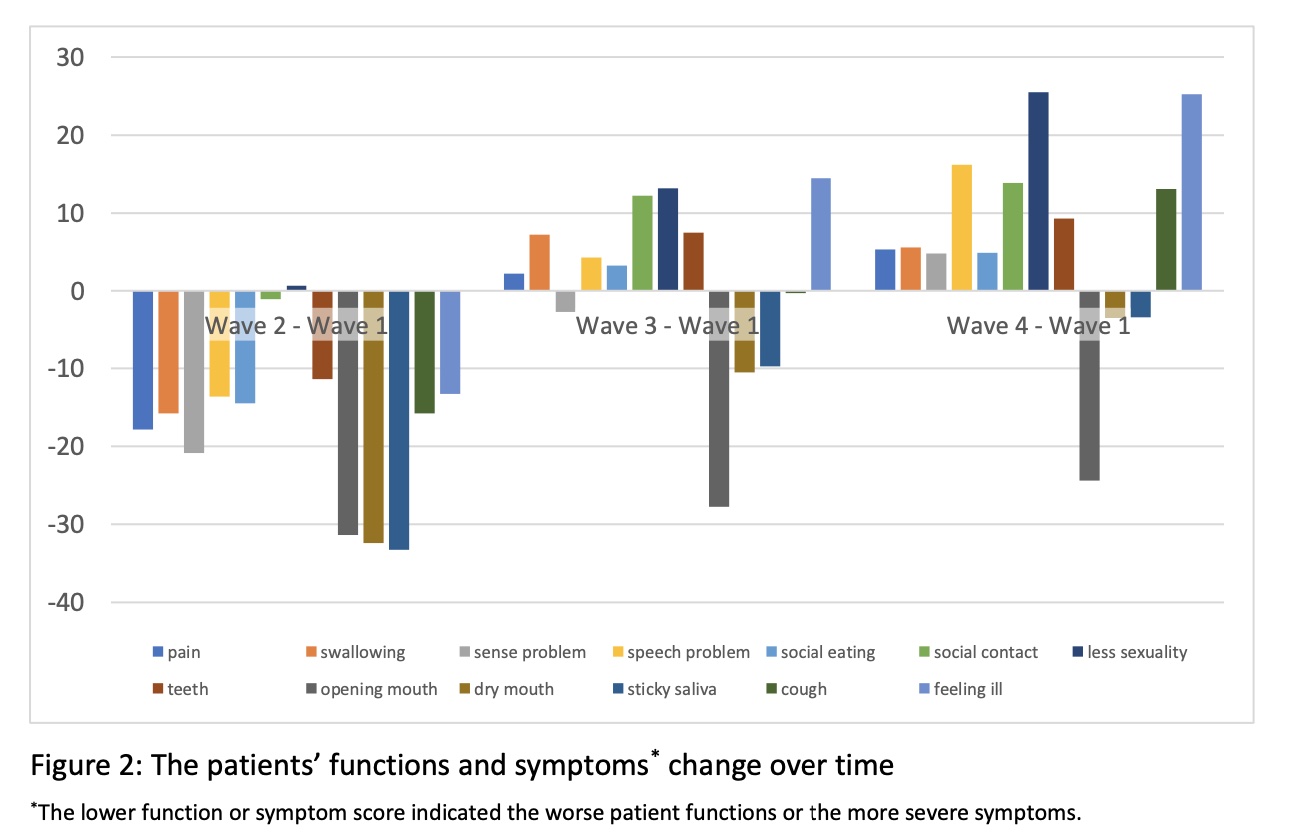Changes in health-related quality of life in Head and Neck Patients Who Received Proton Therapy
Yi Hsuan Chen,
The Netherlands
MO-0564
Abstract
Changes in health-related quality of life in Head and Neck Patients Who Received Proton Therapy
Authors: Yi Hsuan Chen1, Carin Uyl-de Groot1, Marco van Vulpen2, Hedwig Blommestein1
1Erasmus University Rotterdam, Erasmus School of Health Policy and Management, Rotterdam, The Netherlands; 2Holland Proton Therapy Center, Holland Proton Therapy Center, Delft, The Netherlands
Show Affiliations
Hide Affiliations
Purpose or Objective
In comparison to current standard photon irradiation, proton therapy significantly reduced the dose to the surrounding normal tissue and therefore is expected to reduce toxicity and improve patients’ health-related quality of life. Despite the high expectations of proton therapy, there is very limited data on patients’ utility after radiotherapy. The aim of this study was to estimate the changes in utility, patient-reported function and symptom score over time of patients receiving proton therapy.
Material and Methods
A questionnaire-based (consisting of EORTC-QLQ-C30, EQ-5D, and EORTC-H&N-35) prospective Institutional Review Board approved cohort study was performed in a Dutch proton therapy center (HollandPTC)). Head and neck cancer patients who received proton therapy between January 2020 to August 2022 were enrolled in this study. The questionnaires were distributed before the proton therapy, at the end of proton therapy, six months, one year, and two years after treatment. The trends of utility and global health status changes were analyzed. The generalized estimating equation model was used to analyze the association between utility and proton therapy, patient characteristics and radiation-related toxicities.
Results
Our results revealed that the average utility score (range 0-1.0) of head and neck cancer patients before proton therapy was around 0.79 (95% Cl: 0.74 - 0.83) (Figure 1). At the end of proton therapy, the patients’ utility decreased slightly (0.1 points) compared to the baseline. However, this dip was recovered after six months and showed a further improvement one year after the treatment. A similar trend was also observed in patients’ global health status.

The symptoms and function scores showed the deterioration of all reported functions (e.g., swallowing, speech, mouth opening) during the period of treatment (Figure 2). Most of the functions recovered within six months and showed further improvement compared to pre-treatment. Only two symptoms, dry mouth and sticky saliva persisted for more than one year compared to baseline.

Conclusion
This study revealed that within six months after the proton therapy, most of the negative influence subsided and showed an improvement in functions compared to pre-treatment. Although some symptoms lasted longer than one year, this was not seen in the reported global health status and utility values. A larger patient group and comparison to patients receiving photon treatment will be performed.